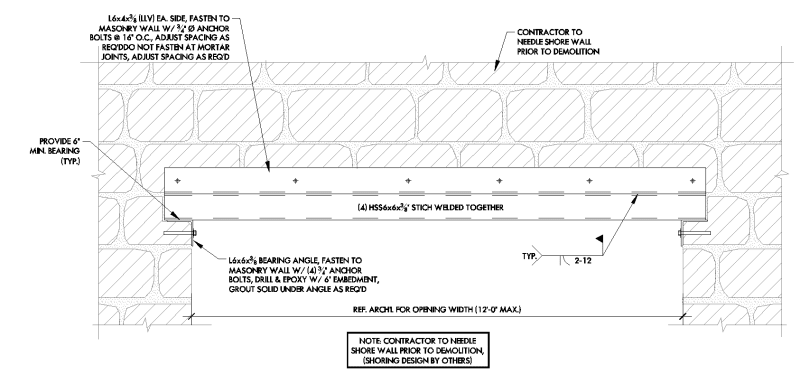-
1
- #1
bhiggins
Structural
- Oct 15, 2016
- 146
Hi Guys and Girls,
I have a remodel project where the architect wants to create a new 12 ft opening in a 2 ft wide limestone block wall. I'm trying to come up with the most practical detail for a new lintel. For thinner walls I've done pinch beam lintels, but I don't think it would work well for a wall of this thickness.
I'm thinking a series of HSS6x6x tubes stitch welded together would work but never used this detail in practice for a retrofit. Here's a detail I've come up with. I'm wondering if anyone sees any constructability issues with this detail or if there is just a better way to detail this opening:

A steel loose lintel angle that works for this span is a L10x10x3/4 each side of the opening. I feel like this size is not practical.
I have a remodel project where the architect wants to create a new 12 ft opening in a 2 ft wide limestone block wall. I'm trying to come up with the most practical detail for a new lintel. For thinner walls I've done pinch beam lintels, but I don't think it would work well for a wall of this thickness.
I'm thinking a series of HSS6x6x tubes stitch welded together would work but never used this detail in practice for a retrofit. Here's a detail I've come up with. I'm wondering if anyone sees any constructability issues with this detail or if there is just a better way to detail this opening:

A steel loose lintel angle that works for this span is a L10x10x3/4 each side of the opening. I feel like this size is not practical.





